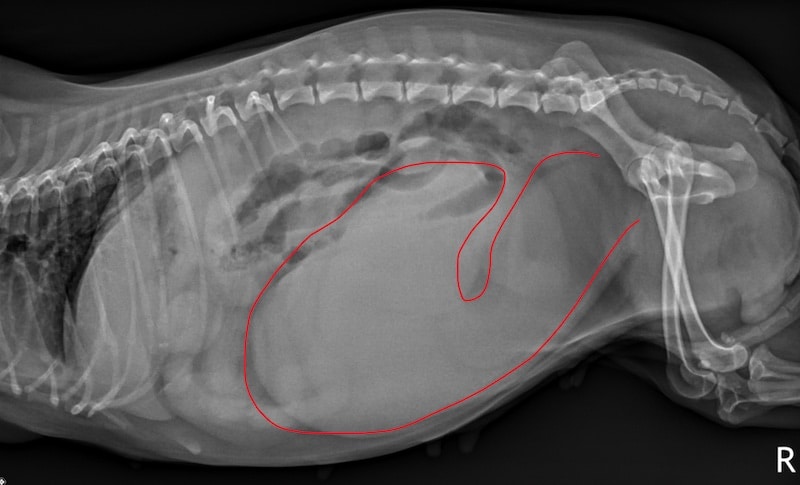Pyometra is one of those medical words veterinarians use that often require translation for pet families. Pyo- is from the Latin word for pus, and metra is Greek for uterus. Once you know this etymology then you can understand why pyometra is an emergency. The pus in the uterus is the result of a bacterial infection, and dogs with pyometra become seriously ill. I’ll discuss risk factors, clinical signs and treatment options for pyometra in this week’s blogpost.
Which dogs develop pyometra?
Veterinarians at the Schwarzman Animal Medical Center recently cared for a dog with pyometra, Sophie. Sophie was a bit of an atypical pyometra patient. This condition occurs in about 20-50% of unspayed female dogs over 10 years of age, and this particular girl was only three years old, a bit younger than average.
Certain breeds are predisposed to pyometra, with large breed dogs at highest risk, but Sophie was a toy breed. In Golden retrievers, a specific gene (ABCC4 on chromosome 22) has been associated with the development of pyometra. The ABCC4 gene controls prostaglandin transport. Prostaglandins are lipid derived hormones involved in uterine function.
Pyometra typically develops within four months of the most recent heat cycle, and Sophie had been in heat the month before.
What are the clinical signs of pyometra?
Dogs with pyometra have two types of clinical signs: those related to the uterine infection and those with multiple organ systems affected by pyometra. Sophie showed only bloody vaginal discharge typical of a dog with an open pyometra. Open means the uterus is discharging the accumulated pus, which is readily observed by the owner. On the other hand, closed pyometra means there is no discharge and is a bit trickier to diagnose.
In both closed and open pyometra cases, the kidneys are often affected, so dog owners may notice increased thirst and urination. Patients are also often lethargic and have a fever.
How is pyometra diagnosed?
Blood tests help veterinarians recognize how serious the uterine infection is. Sophie had an elevated white blood cell count typical of infection. Fortunately, her kidneys were not affected by the pyometra, but approximately 40% of dogs have abnormal kidney tests. Most dogs’ kidneys recover after the pyometra is corrected. Sophie also had an x-ray of the abdomen which confirmed the presence of a fluid filled uterus typical of a pyometra. To see x-rays of pyometra, review the Usdan Institute’s Pet Health Library entry on pyometra.

How is pyometra treated?
Sophie underwent surgical removal of the infected uterus and the ovaries, known as a spay. The procedure allowed her to be discharged from the hospital the following day. Occasionally, hormone therapy is used to treat a pyometra without surgery.
How can pyometra be prevented?
No dog owner wants their dog to need a trip to the animal ER. Pyometra can be completely avoid by spaying your dog at a young age.

